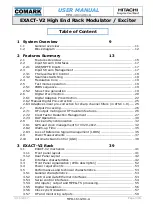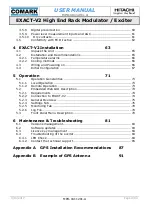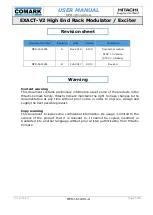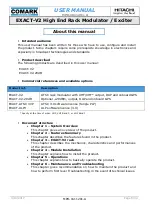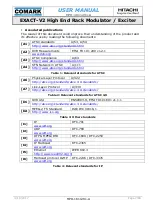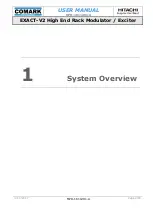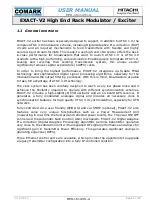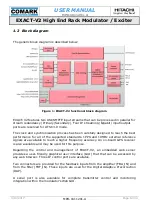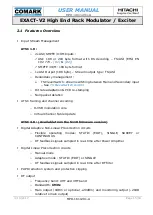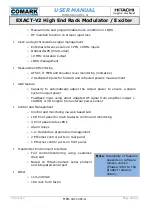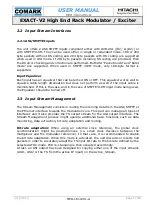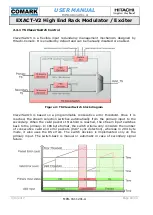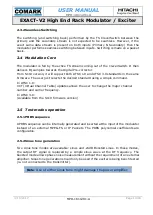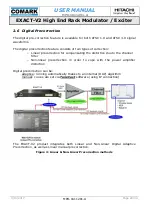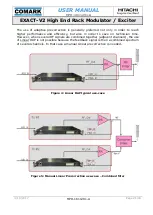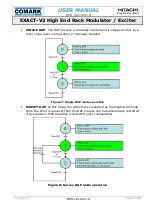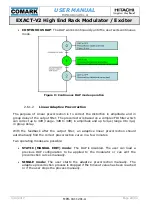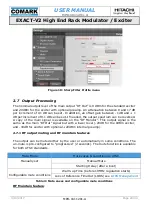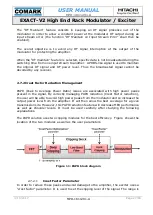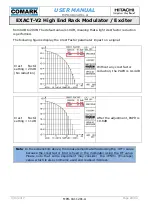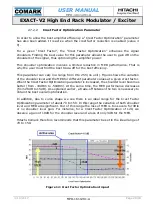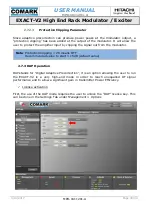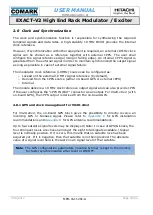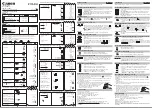
USER
MANUAL
MPD-1611291-A
EXACT-V2 High End Rack Modulator / Exciter
3/10/2017
MPD-1611291-A
Page 17/94
2.2
Input Stream Interfaces
2.2.1
ASI/SMPTE Inputs
The unit offers 2 ASI/SMPTE inputs compliant either with DVB-ASI ([D1] & [D2]) or
with SMPTE 310M. They can be used either in single or redundant mode. 188 or 204
byte packets without RS coding and 204 byte packets with RS coding are supported
when used in ASI mode. If 204 byte packets including RS coding are provided, then
the RS error checking and correction are performed. Both ASI “Packet mode” and “Burst
mode” are supported. When used in SMPTE 310M mode, only 188-byte format is
supported.
Input Equalizer
Each input has an equalizer that can be turned ON or OFF. This equalizer works well to
equalize cable length attenuation but does not perform as well if the input cable is
mismatched. If this is the case, and in the case of SMPTE 310M input mode being used,
the Equalizer should be turned off.
2.3
Input Stream Management
The Stream Management consists in routing the incoming data from the ASI/SMPTE or
the Ethernet interface towards the modulation core. This part can manage all types of
interfaces and it also provides the TS output stream for the ASI output interface. The
Stream Management process might operate additional basic functions such as data
monitoring, data extraction, bit-rate adaptation and routing.
Bit-rate adaptation: When using an external clock reference, the global clock
synchronization might be plesiochronous (i.e. small clock deviance between the
multiplexer and the modulator reference). In that case, it is recommended to enable
the bit rate adaptation. When this mode is activated, the unit discards or inserts null
packets in order to accurately adapt the TS input bit-rate to the bit-rate defined by the
selected ATSC mode. PCR re-stamping is then executed accordingly.
At last, an ASI output has been designed for copying either one of the input streams
(ASI1, ASI2 or the TS from the active IP input) on the Active_Stream.

